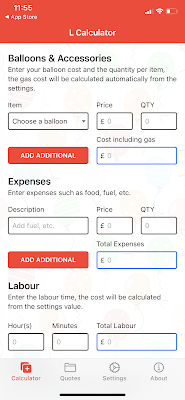With so many balloon businesses offering the same types of products and services, you can only win over your competition if your products or services offers something that theirs does not. Chances are, your competitors are in the same marketplace as you are, so it is important that what you are selling has certain features that cannot be easily found elsewhere.
This factor is known as a selling point, or a USP. Essentially, a USP is a summary of features that makes your business unique and valuable to your target market. It tells your target customers that your company offers more value compared to other balloon businesses. It is not just about appearing different from the rest, it is about offering something of value that consumers will not find from other balloon businesses.
It is our mission to find a compelling reason for someone to order balloons and decor from you rather than someone else.
The low price guarantee is a USP that many larger businesses use to entice customers. Here in the UK, we have a large retail chain of department stores who use the motto "Never Knowingly Undersold" - This means that this store will never knowingly sell identical products that are of a higher price or worse value for money than those offered by other retailers. This USP has been a huge part of their marketing for many years, and it certainly works! But is offering lower prices a good USP for a small business?
Remember, price is never the only reason people buy. If your competition is beating you on pricing because they are larger or undercharging, you have to find another sales feature that addresses the customer's needs and then build your sales and promotional efforts around that feature.
Focus on a niche - something that you specialise in.
Focus on what you can do to be different, as attempting to be known for everything will only lead to not being known for anything at all. And remember, it’s not just your product that can be the differentiating factor, it could be your location i.e. there are no other competing businesses in that area, or it could be the incredible customer care and service that you offer!
There is no need to take ‘unique’ too literally. Simply being perceived as the brand that focuses on a specific thing can work wonders, even if your competitors are doing it as well (but maybe don’t shout about it).
It is perfectly OK to have more than one USP!
Personalisation is a fantastic service to offer and can be a great USP!
"All our personalised balloons are beautifully handcrafted to order."
Be the creative, small business that cares! Telling customers that you are a small business and that you care is a great USP! There has been a lot of support towards small and local businesses during the pandemic. #supportsmallbusiness #supportlocal and #shoplocal are three extremely popular and well-used hashtags on Social Media. Pointing out that you are a small business and that you care is a positive USP that will mean something positive to your potential customers.
No company is born with a USP or differentiating factor. You must create, nurture, and propagate it if you want to reap the benefits.
Your USPs need to be in front of the customer at every possible opportunity. For example, they can (and usually should) be included in: brochures, adverts, press releases, direct mail letters, letterheads, corporate Christmas cards, invoices, catalogues, on the walls in customer areas, and in as many other places as possible.
And finally, remember that you cannot please all the people all of the time - your USP may attract some customers and not others, but that's life, and maybe they are not the customers or clients that you are actually looking to work with!
Frank Jeschke of Ballonmeister in Hückeswagen, Germany, recently expanded his ever-growing business and opened a new, bigger balloon store in his home town. He opened his first store in 2017, but with his growing business, he felt that this was the perfect time to expand! I asked Frank what his business USP is. He said:
"The secret of our success is a combination of important features.
We are creative and offer hundreds designs for all occasions, for every taste and in every price segment.
Our good selling designs work with uncountable combinations of foils and latex. Following the principles of design, every day we sell something new. We don't stop working on our skills and technics to develop new ideas.
We customise many balloons with individual enhancements in every style and colour.
Our product range of balloons is as high as possible. Our customers can find foil balloons covering every occasion and topics. We offer latex balloons in every size and in all colours. The quality of our materials is really important to make our works as durable as possible. Last but not least is professionalism, which is a main factor in our business. Our customer's knows that we are the specialists for balloon decorations and balloon gifts. That is the reason that the catchment area of our shop is big."
So what is your USP, and have you applied it to your business ethics?
Happy Ballooning!
Sue
Follow me @suebowler


































